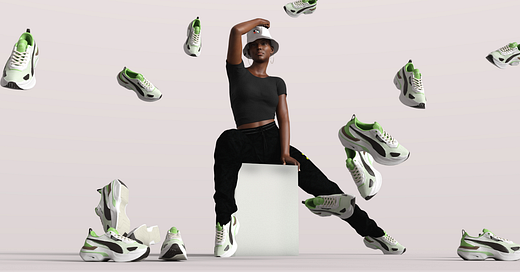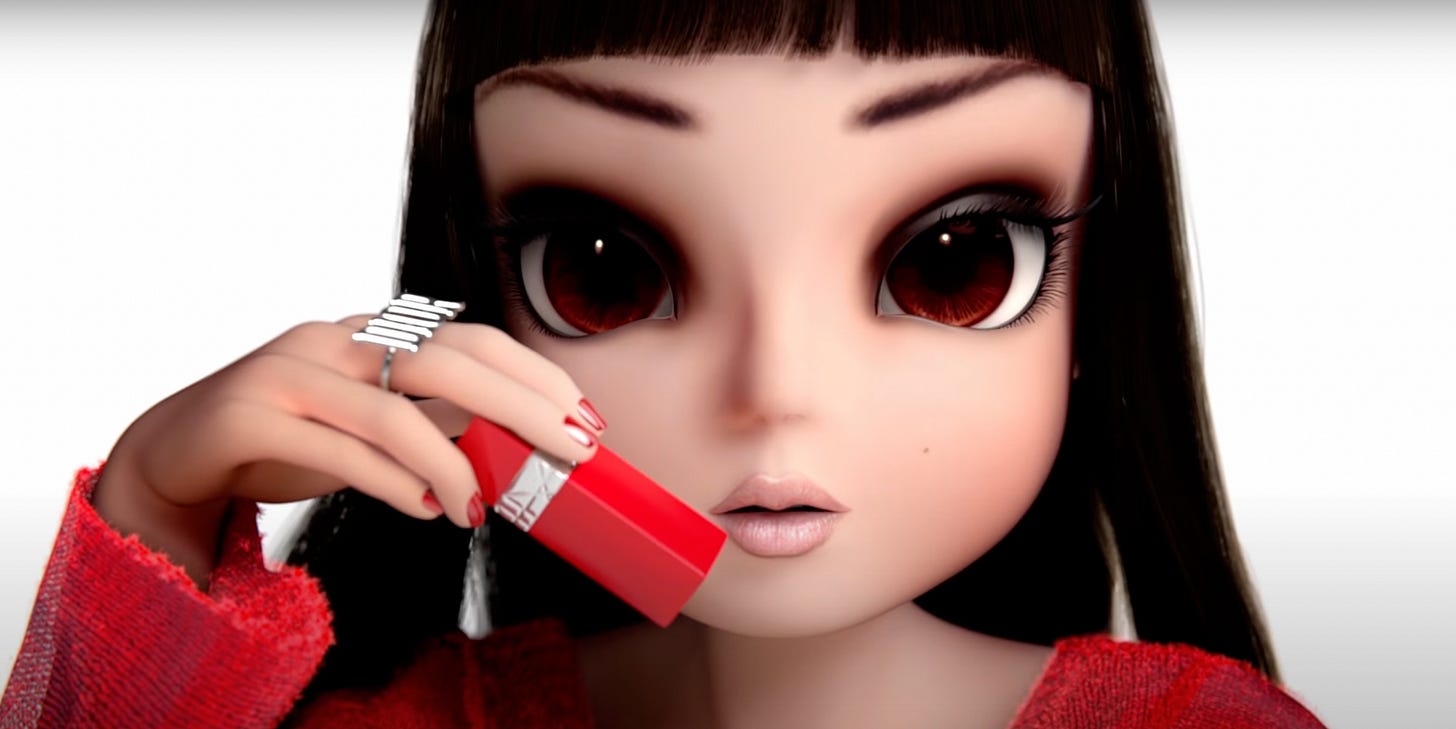The Splice 🧬 PUMA's Latest Virtual Influencer Campaign
Plus learn how the beauty industry has embraced virtual influencers and why NFTs are coming to Instagram soon
Good afternoon!
Welcome back to The Splice 🧬 by VirtualHumans.org: a weekly newsletter curating the latest news, developments, and insights in the virtual influencer space.
(Was this email forwarded to you? Sign up here)
We are excited to announce a new sub-series “In Conversation With…” where we ask other talented Substack writers about virtual influencers and how they relate to the metaverse, marketing, and more. In this week’s edition, we spoke with Phillip Brown of Influencer Marketing Academy, down below. Check his perspective out!
🧬 Core Strands from This Week
Virtual Influencers Are Changing the Face of Beauty
🔎 The Synopsis: First fashion, and now the beauty industry are embracing virtual influencers. In this piece, we reviewed innovative advertising campaigns from Dior, KKW Beauty, and Dermalogica that feature virtual influencers.
🧬 The Splice: So far, we’ve seen two types of virtual influencer beauty campaigns. Either you can partner with an existing virtual (like how Dior worked with Noonoouri in the image above), or a brand can build their own virtual influencer to become a brand advocate (like with Dermalogica’s virtual educator, Natalie).
Why PUMA Chose Virtual Influencers to Advertise Their New Kosmo Rider Shoe
🔎 The Synopsis: PUMA tapped two virtual influencers from across the globe for their latest sneaker: the Kosmo Rider shoe. Kim Zulu (pictured above) hails from South Africa, while Maie is a virtual influencer from Shanghai, China.
🧬 The Splice: Both Kim Zulu and Maie are micro-influencers with 3k followers each, but that doesn’t stop major brands like PUMA from working with them. Kim starred in a futuristic photoshoot while Maie included the new Kosmo Rider shoe in her new music video.
🔭 What We’re Looking at This Week
‘How’d you like my fake AI voice?’: Virtual character Zero made an appearance at SXSW today
🔑 Key Quote: “Today at SXSW, co-founders of Offbeat Shep Ogden and Christopher Travers spoke alongside investor Mark Cuban about how Zero works, and shared their predictions for the future of virtual influencers. ‘Zero, our Virtual Human that will join the panel today is produced in all real-time. Nothing today was pre-recorded and Zero will be interacting with us just as a normal human influencer would through the video call,’ Ogden told the Daily Dot ahead of the panel.” — the Daily Dot
Mark Zuckerberg said NFTs are coming to Instagram
🔑 Key Quote: “Zuckerberg did not delve into specifics, but he said users would be able to bring existing NFTs over to Instagram and ‘hopefully over time be able to mint things within that environment…Long-term, I would hope that the clothing that your avatar is wearing in the metaverse can be minted as an NFT,’ Zuckerberg told SXSW.” — Business Insider
Former Disney chief Bob Iger enters metaverse through investment in Genies
🔑 Key Quote: "‘I've always been drawn to the intersection between technology and art, and Genies provides unique and compelling opportunities to harness the power of that combination to enable new forms of creativity, expression, and communication,’ said Iger, who has spent more than a decade in Disney.” — Reuters
🗣️ In Conversation With…
Phillip Brown of “Influencer Marketing Academy”
When did you first hear about virtual influencers? Who was your first?
Lil Miquela was the first one I started reading about back in (I believe?) 2018 - when she collaborated with brands such as Prada. However, it was Knox Frost's partnership with the WHO in 2020 that really got me interested in following VI's more closely.
What are key differences of working with virtual influencers vs. humans?
In my personal experience, the main differences lies within the collaboration workflow. You can *literally* create anything with VI's, which provides a lot of different ways to approach the campaign. I have also experienced that when collaborating with a VI, you'll often be supported by a dedicated creative team to develop the most creative ideas within your perimeters.
Other differences are mainly around timelines; it can take longer for content to be created when working with VI's and edits require a longer turnaround time than your average human creator.
What advice can you share on building a virtual influencer campaign?
My main and most important piece of advice is to make sure that the campaign is fully integrated. You want to try and make sure that the content created by the VI doesn't sit isolated. By that, I mean the following:
Develop a wider brand narrative, supported by a bigger PR story and comms.
Facilitate integration across socials; make sure there is support and interaction between the brand/property and VI in order to generate meaningful engagement that travels.
Utilize existing assets; if you have an athlete that the VI can interact with or an event, make sure this is explored.
Make sure the campaign has longevity, a smash-and-grab approach is not advised. Build for the long-term and create future opportunities.
Close the feedback loop; make sure that the campaign has input from both brand and VI side. They are the content experts after all, and will be able to advise on what works well.
Best,
VirtualHumans.org
—
Insights by Makena Rasmussen, Christopher Travers, and Astrid Hiort.








